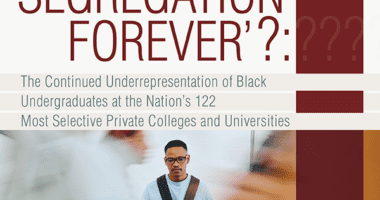How a Provost Ignites Change
Today, the only technology in José Cruz’s office is a telephone. He’s provost at California State University, Fullerton, a campus of 38,000 students. And he says a phone is all he needs.
José is a cerebral, analytic academic with a Ph.D. in engineering. Normally, this kind of person accumulates thinking tools. And indeed, when he was a vice president at Ed Trust, he had two big computer monitors in his office; his wall space was covered in white boards for sketching his ideas, which often arrived in the shapes of diagrams: x- and y-axes creating fields for controlled variables, towers built from blocks of program elements, and diagrams of alliances that resembled whirling Tinker Toys.
But José’s not at Fullerton to acquire computers and white boards; his passion is equity and his purpose is to increase academic success and graduation rates for low-income students and students of color. One reason he doesn’t need technology in his office is because he’s rarely there. Provosts, José says, are constantly in motion: bringing people together, challenging them, igniting them, keeping them organized, on task, and accountable.
At Ed Trust, he managed Access to Success (A2S), our mammoth program in which 19 public university systems pledged to cut in half access and completion gaps for low-income students and students of color by 2015. Ed Trust tracks the data and provides the support.
José recently spoke to a group of A2S provosts, all of them leading campuses to raise achievement and close gaps at public universities from Hawaii to Tennessee to Wisconsin. He talked about how he’s now running his own A2S at a school whose student body is 35 percent Hispanic, 21 percent Asian/Pacific Islander, and 38 percent Pell-eligible. Now, the data is up close and personal — and walking around on a campus in southern California.
Here, according to José, is how improvement can happen, in the three-dimensional, real-time world of Cal State Fullerton:
- Look at the data and see where you are. (If you’re in A2S, you get a scorecard from the Ed Trust.)
- Remind yourself that access and success are not optional: They are an important part of your institutional mission.
- Break it down. Find out what works and where your problems are. Establish a baseline, make a plan, implement, and check yourself.
- Recruit your talent. Make committees, pulling from across schools and including all the roles (senior leadership, faculty, staff, students) from the academic side and from student services — and include IT.
- Set aside time, and make sure that means people devote real energy to the task.
- Develop tools: Fullerton has an app on student success and access, and a student success dashboard that flags students in need by checking habitual problems (e.g., not enough credits in the right places).
- Go back to the data, but this time use it to find your persistent problems and successes. For instance, you can make a big difference by making high-enrollment courses also high-success courses.
- Engage everybody: senior administrators with insights into the problems and connections to peers across the country; advisers who can provide early proactive support and data-driven guidance; associate deans who identify and eliminate systematic obstacles in departments and majors based on history; institutional research that can deliver real-time insights and analysis across campus — and students, who can make better, more informed decisions with all of the above guidance and information.
And, José says, bring it all together. Honor and tap your champions. Draw on your institution’s culture, including shared governance. Use the natural rhythms of the institution, but raise the tempo. Be aware that it’s all about student learning, but that the bigger picture, which you need for success, includes increasing the frontiers of knowledge, lowering costs, serving the community, and raising achievement and completion rates. And remember that, finally, you are serving opportunity, social mobility — and justice.
All of which is why we miss him at Ed Trust — and why we’re glad he’s at CSU-Fullerton, making it happen.









